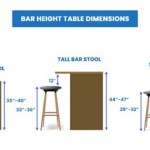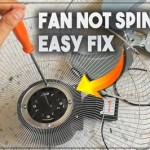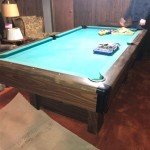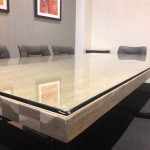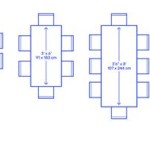Playcraft Woodbridge Shuffleboard Table Assembly: A Comprehensive Guide
The Playcraft Woodbridge Shuffleboard Table represents a significant investment in both recreational enjoyment and home décor. This high-quality table offers a challenging and engaging game for players of all skill levels. However, before the first puck glides across its surface, the table requires careful and precise assembly. Neglecting proper assembly procedures can compromise the table's structural integrity, gameplay performance, and overall longevity. This article provides a detailed guide to assembling the Playcraft Woodbridge Shuffleboard Table, ensuring a successful outcome that allows for years of enjoyment.
The assembly process, while not overly complex, requires attention to detail and adherence to the manufacturer's instructions. Familiarizing oneself with the component parts and understanding the sequence of steps are crucial for avoiding errors and potential damage to the table. Before commencing assembly, it is imperative to thoroughly review the parts list included with the table to ensure all components are present. Any missing or damaged parts should be reported to the retailer or manufacturer immediately. Furthermore, having the necessary tools readily available will streamline the assembly process and minimize frustration.
Key Point 1: Preparation and Inventory
Prior to unpacking the Playcraft Woodbridge Shuffleboard Table, select a suitable assembly location. This space should be large enough to accommodate the table's full dimensions – typically 12, 14, or 16 feet in length, depending on the model – with ample room to maneuver around it during the assembly process. Protect the flooring with a drop cloth or similar protective covering to prevent scratches or other damage. Clear the area of any potential obstructions, such as furniture or other items that may impede movement.
Once the assembly area is prepared, carefully unpack all components from the shipping cartons. Exercise caution when handling the individual parts, particularly the playing surface, to avoid scratches or dents. Lay out all components systematically, grouping similar parts together to facilitate identification and organization. Refer to the parts list included in the packaging to verify the presence and quantity of each item. This includes the playing surface (typically the heaviest and most critical component), the cabinet base, leg assemblies, side and end aprons, scoring unit, and any hardware such as bolts, screws, and washers. Discrepancies between the parts list and the actual components should be reported to the supplier immediately.
Gather the necessary tools for assembly. A standard toolkit will typically suffice, but certain tools are essential for ensuring a secure and accurate assembly. These include: a Phillips head screwdriver (both manual and powered are recommended), a flathead screwdriver, an adjustable wrench, a socket set (with appropriately sized sockets for the bolts and nuts provided), a level (preferably a carpenter's level), a measuring tape, and a rubber mallet. The rubber mallet is useful for gently tapping components into place without damaging the finish. In some cases, a drill may be required for pre-drilling pilot holes, particularly if the wood is dense. However, exercise extreme caution when using a drill to avoid stripping the screw holes or damaging the wood.
Key Point 2: Cabinet Base and Leg Assembly
The cabinet base typically consists of the primary supporting structure of the shuffleboard table. Depending on the model, the base may arrive partially pre-assembled, or it may require complete assembly. Refer to the manufacturer's instructions for specific guidelines regarding the assembly of the cabinet base. Generally, this involves connecting the side panels, end panels, and any internal supports or crossbeams. Use the appropriate screws and bolts provided, ensuring that they are tightened securely without over-tightening, which can damage the wood.
Once the cabinet base is assembled, attach the leg assemblies. The legs provide the necessary elevation for the table and contribute to its overall stability. The legs are typically attached to the cabinet base using bolts and washers. Ensure that the legs are aligned properly and securely fastened to the base. Some models may include adjustable levelers on the legs, which allow for fine-tuning the table's height and ensuring a perfectly level playing surface. Before proceeding further, use a level to verify that the cabinet base and legs are indeed level. Adjust the leg levelers as needed to achieve a level foundation.
The side and end aprons add to the aesthetic appeal of the shuffleboard table and provide additional structural support. These are typically attached to the cabinet base using screws. Align the aprons carefully, ensuring that they are flush with the sides and ends of the cabinet base. Use a rubber mallet to gently tap the aprons into place if necessary. Secure the aprons with screws, taking care not to overtighten them, which can split the wood. The aprons should fit snugly and seamlessly against the cabinet base.
Key Point 3: Playing Surface Installation and Leveling
The playing surface is the most critical component of the shuffleboard table, and its installation requires utmost care. The surface is typically heavy and unwieldy, so enlist the assistance of at least two people to lift and position it onto the cabinet base. Carefully align the playing surface with the cabinet base, ensuring that it is centered and that the edges are flush with the aprons. Some models may include pre-drilled holes in the playing surface and the cabinet base to facilitate alignment and attachment. Use the screws provided to secure the playing surface to the cabinet base, tightening them evenly to prevent warping or distortion.
Once the playing surface is securely attached, the next step is to ensure that it is perfectly level. Use a carpenter's level to check the levelness of the surface in multiple directions – lengthwise, widthwise, and diagonally. If the surface is not level, use the adjustable leg levelers to make the necessary adjustments. It may be necessary to shim the legs or the cabinet base in certain areas to achieve a perfectly level playing surface. Continue making adjustments until the level indicates that the surface is perfectly flat and level in all directions.
With the playing surface level, inspect its surface. Minor imperfections or blemishes may be present due to the natural characteristics of the wood. However, any significant scratches, dents, or other damage should be addressed. Contact the retailer or manufacturer if necessary. Next, apply a thin, even coat of shuffleboard wax or silicone spray to the playing surface. This will help to protect the surface and reduce friction, allowing the pucks to glide smoothly and consistently. Follow the manufacturer's instructions for the application and maintenance of the wax or silicone spray. Regular cleaning and waxing will help to prolong the life of the playing surface and maintain its optimal performance.
Finally, install the scoring unit, which typically consists of a scoreboard or other device used to track the game's score. The scoring unit is usually mounted on one or both ends of the table, depending on the model. Follow the manufacturer's instructions for installing the scoring unit, ensuring that it is securely fastened and that the digits or indicators are clearly visible. Once the scoring unit is installed, the shuffleboard table is ready for play. Gather the pucks and familiarize oneself with the rules of the game. Practice and refine one's skills to fully appreciate the challenging and rewarding experience of playing shuffleboard on a Playcraft Woodbridge Table.
In addition to the steps outlined above, consider consulting the manufacturer's assembly manual for detailed instructions and diagrams specific to the particular model of Playcraft Woodbridge Shuffleboard Table being assembled. The manual may contain model-specific information or recommendations that are not covered in this general guide. Furthermore, do not hesitate to seek assistance from a qualified professional if one encounters difficulties during the assembly process. A professional installer can ensure that the table is assembled correctly and safely, maximizing its performance and longevity.

Playcraft 9 Woodbridge Shuffleboard Table

Playcraft Woodbridge 14 Shuffleboard Table In Honey Oak Planet

Playcraft Woodbridge 16 Shuffleboard Table In Black 2 Piece Planet

Playcraft Woodbridge 16 Shuffleboard Table In Cherry Planet

Playcraft Woodbridge 12 Shuffleboard Table In Black Planet

Woodbridge Cherry 14 Shuffleboard Table M P Amusement

Playcraft Woodbridge 12 Shuffleboard Table In Black Planet

Playcraft Woodbridge 14 Shuffleboard Table In Cherry Game World Planet

Woodbridge Shuffleboard Table Playcraft Finish Honey Size 14 Yahoo Ping

Playcraft Woodbridge 9 Shuffleboard Table In Espresso Game World Planet

